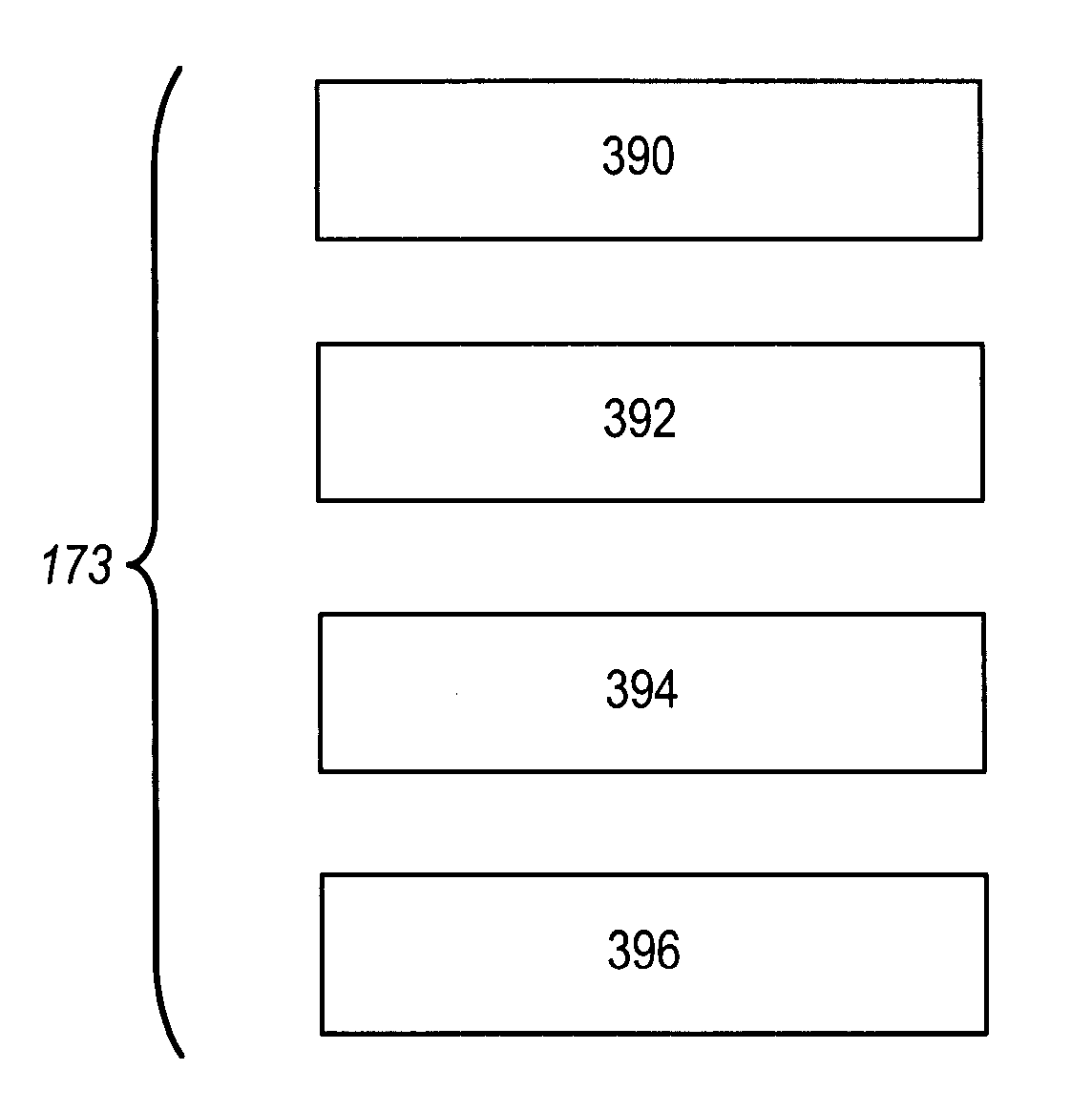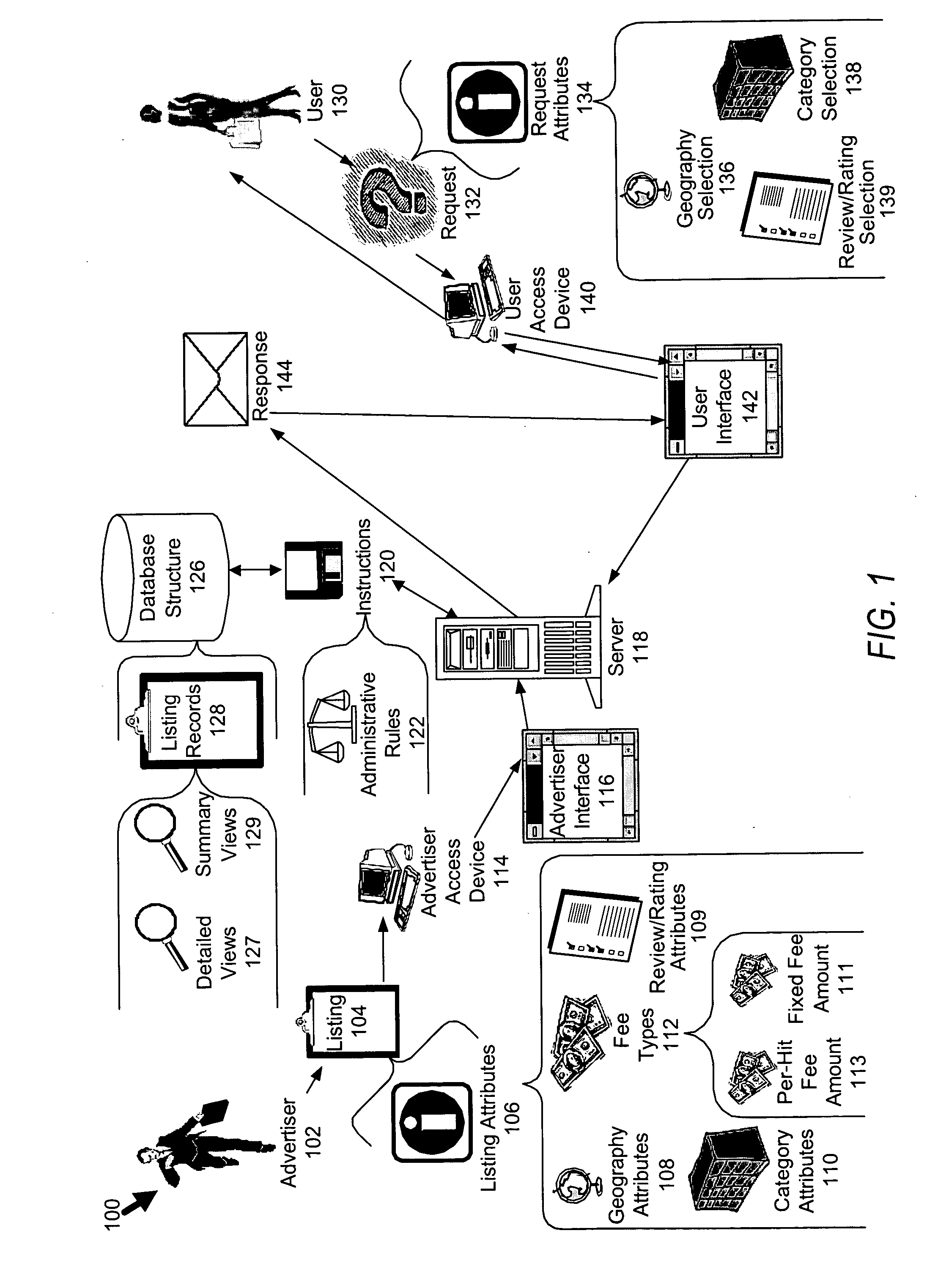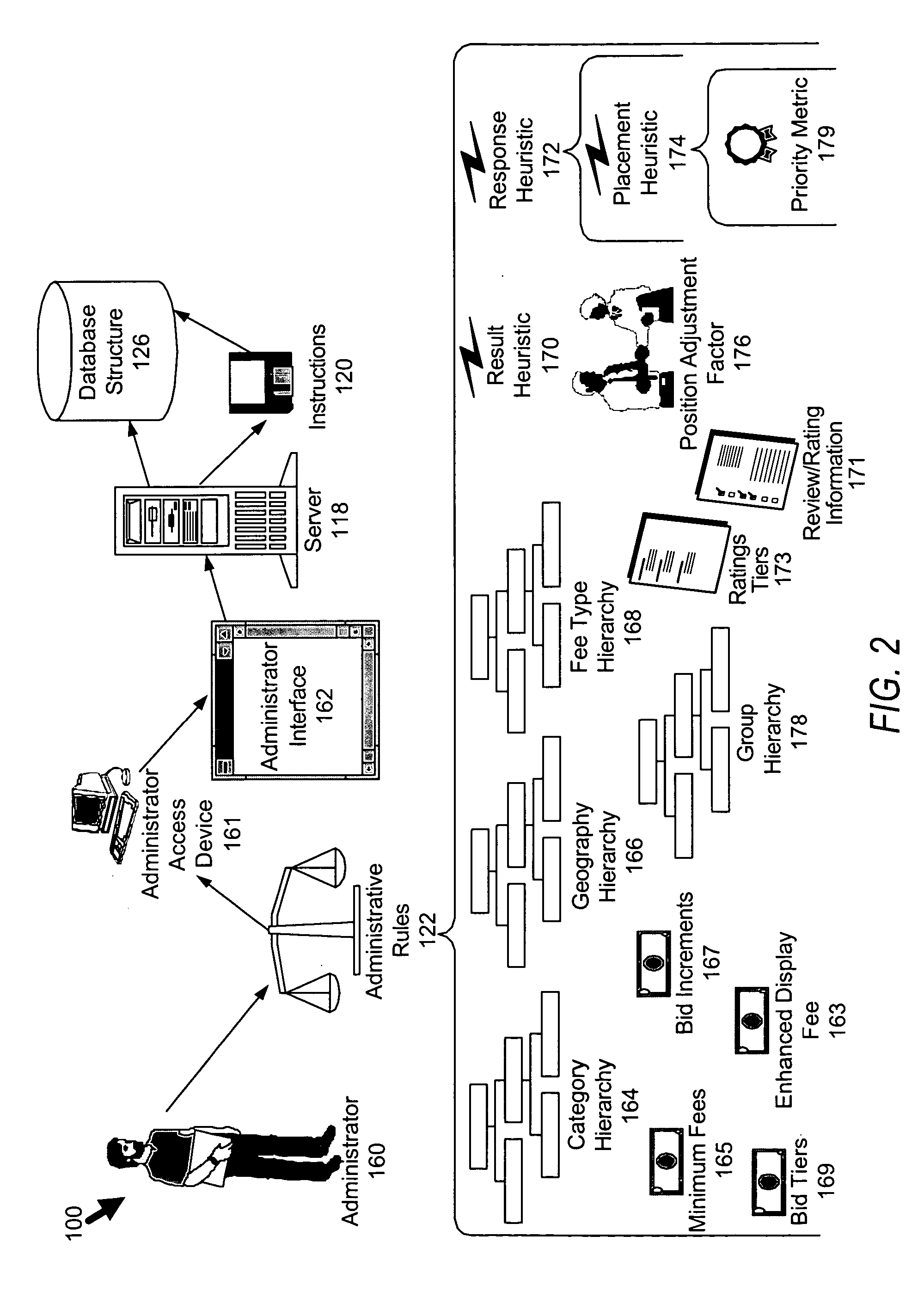Although phone books do provide customers and providers with a useful way to reach out to each other, phone books suffer from various flaws and limitations that are intrinsic to “
hard copy” documents.
Advertisers in the phone book cannot update their listings once the phone book is published.
Moreover, phone books are not, and cannot be, specifically tailored to the specific needs of a specific customer at a desired time and place.
A printed phone book cannot adapt itself to the ever changing specific goals of the customer, or to the specific intentions of the supplier in the context of customers with such goals.
The lack of flexibility provided by conventional phone books is particularly evident in evaluating the geographical and categorical goals of the potential customer.
The functionality of geographical distinctions is limited in phone books.
The ability of phone books to incorporate the geographical desires of customers is limited to a single binary variable.
Phone books do not typically allow the customer to perform a more narrow inquiry limited to a mere subset of the geographical regions covered by the phone book.
For example, a phone book for a particular
metropolitan area does not typically allow the customer to limit their view to listings within a geographical area that is selected by the customer.
The functionality of organizing listings into various
subject matter categories is also significantly limited in a traditional printed phone book.
Phone books cannot incorporate a hierarchy of categories without introducing a prohibitive quantity of redundancy.
True hierarchies of categories are not an option, because the paper medium of a phone book does not provide the dynamic ability to “
drill down” or “
drill up” a hierarchy.
By limiting the ability of customers to “zero in” and focus on the listings that are of interest, traditional phone books force customers to wade through information that is not of interest to the information that they are currently looking for.
Limitations of physical phone books also impede the desires and goals of advertisers.
Moreover, the barbershop may not provide the range of
hair care and other appearance-related services of a beauty salon, spa, or similar business.
If the provider chooses not to pay for a listing, both the provider and the publisher of the phone book are negatively impacted by the inherent limitations of the phone book.
Phone books lack a
direct feedback mechanism to inform phone book publishers and their advertisers of the usage of the various categories or advertisements in the phone book.
The inability to directly measure the effectiveness and utility of listings impedes advertisers in transmitting their message in a phone book, and limits the ability of publishers to facilitate such communications.
The inability to directly measure effectiveness results in inefficiencies that are detrimental to publishers, advertisers, and customers.
Unfortunately, in solving certain problems, search engines in the existing art actually exacerbate many existing limitations of paper-bound phone books while also creating entirely new problems.
The use of search engines, however, in more common contexts all too often results in “information overflow” for the user, as well as the providing of so-called “false positives.” Unlike paper-bound phone books, search engines are not limited to organizations desiring to provide potential customers with particular goods and services.
Search engines are not designed to easily provide users with the ability to identify nearby businesses involved in a particular category or sub-category of goods or services.
Search engines do not provide an efficient mechanism for potential customers to obtain information from providers interested in providing a particular good or service to the customer.
This limitation is intrinsic to the nature of
the Internet and the types of searches performed by conventional search engines.
Nor do search engines provide guidance to both advertisers and customers through a normalized hierarchical category structure, designed to minimize the likelihood of returning less than the desired
universe of goods and services.
The unmanaged evolution and growth of
the Internet has resulted in such a large volume of ever increasing information that precludes attempts to organize every potential search listing into a hierarchy of categories and geographical areas.
Search engines also hamper the ability of providers to better focus their marketing and advertising efforts to potential customers.
Advertisers in such systems cannot target their audience based on geography or the category of the good or service, and the use of “key” terms based solely on word matching greatly reduces the total
universe of potentially relevant hits to the detriment of all involved.
However, no site has used these ratings and / or reviews in concert with geographic attributes, category attributes, and / or the per-hit fee paid in order to determine advertiser positioning in a display of search results.
Both
online search tools and the more traditional printed phone books lack useful mechanisms to enhance the ability to potential customers to find the information they are looking for, and the ability of providers to focus their marketing and advertising efforts to those potential customers most interested in their goods and services.
The known prior art does not disclose, much less affirmatively suggest, the existence of a system or method that can surpass the functionality of both traditional printed phone books and
online search tools with respect to the focusing of the search.
Listing-based approaches fail to give proper weight to loyalty and to business relationships “as a whole.” For example, listings based on per-hit fees alone ignore the relevance of other attributes that are important to both the user and the advertiser such as category attributes, geographic attributes, and ratings information.
Existing information distribution mechanisms typically fail to take full
advantage of the different ways in which different listings can be differentiated from one another.
However, the search engines in the existing art apparently fail to encourage the differentiation of listings through the use of different enhanced
display format characteristics.
Even highly market driven search engines that are premised upon competitive bidding between various providers currently fail to factor the use of enhanced display formats into the fees charged to advertisers and other providers.
This failure results in a lack of incentive on the part of search engines to offer various enhanced
display format options to providers and other advertisers.
Limiting the
impact of a bid amounts to the order of listings thus fails to accommodate the desires of advertisers.
Regardless of the placement / positioning rules implemented by such systems, “competition” between listings is not necessarily enhanced by such rules.
However, not all of the advertisers are necessarily in a position to try and compete for the pole position.
Moreover, many advertisers may genuinely not be interested in attempted to out bid all other advertisers.
Thus, a strict bid order environment may result in maximizing the competitive bidding for the pole position, while failing to maximize the aggregate competitive bidding for the listings within a response as a whole.
 Login to View More
Login to View More  Login to View More
Login to View More 


